On Saturday, 22 October 2016, around 300 journalists, mainly Cubans, gathered in Miami to celebrate the National Day of Press Freedom in Cuba. Unfortunately, the independent press in our country does not know the date, nor the origin or even the people for whom the independent journalists work.
Jesús Díaz Martínez, Vice Dean of the National College of Cuban Journalists in Exile, said in an interview to Vicente Morín Aguado in Florida that “our organization was founded in 1962 in pursuit of defending a presidential decree from 1943, connected to the first official newspaper Papel Periódico de la Havana, the first newspaper in our country.”

Digging into history, the originally weekly soon got under the auspices of Sociedad Económica de Amigos del País (Economic Society of Friends of the Country). The publication, half official and half community newspaper, published government decrees along with the lost and found announcements, sell, buy and exchange advertisements among its subscribers. In the beginning, one of the essential roles of the publication was to collect funds for the creation of the first public library.
Today, its role has changed: one of its main collaborators, a veteran Jesús, assures that “we do not recognize the Cuban government, it is a dictatorship. We are supportive of those reporters who are facing repressions in our country today. There is a constant and total violation of fundamental human rights that are universal: the freedom of speech and freedom of assembly.”
Repressions are becoming more intense in our society and there are plenty of examples to prove this.
Recently, some young journalists from the Periodismo de Barrio project (Neighbourhood Journalism) were detained on their way to Baracoa, when trying to make a realistic report on the aftermath of the devastating Mathew hurricane.
In addition, it was reported from Havana that four journalists were prohibited to travel to Columbia despite that they had obtained a legal visa as well as an invitation by the Center of Legal Studies in Bogotá. The National Security Department (DSE) rejected to issue a travel permit to each one of them, arguing the decision followed after the students had participated in a meeting to support Donald Trump’s candidacy in the La Normal Park in Havana.
On the other hand, in Villa Clara and Holguín there are information professionals working in the state media, demanding their right to work with the internet, which is a common and natural trend in any part of the world.
A few weeks ago a court passed a sentence in which a Holguín journalist was definitively expelled from the Union of Cuban Journalists (UPEC) for publishing a controversial declaration of Karina Marrón – deputy director of Granma – during the last congress of the Union.
The final scandal related to the party-liners concerns Susana Gómez Bugallo who had been waiting 14 days for a “permission” to make an ordinary coverage on a Coppelia ice cream parlour only to be defeated by the red tape in the end.
While accompanying President Obama during his visit in Cuba, John Lee Anderson, a writer with communist affiliation noted: “it is Cuba, not the United States who has to face the real challenge. The problem of journalism of the Communist Party of Cuba (PCC) is how it is responding to challenges of modernization and to the changes connected with the means of communication.”
Fear prevails in Havana; people have their own opinion but do not take up the cudgels for it and refuse to identify themselves. Nearly everyone recognizes the value of independent journalism but forgets what José Martí claimed:
“One who lives a life of infamy and elbows his way through, is despicable. Yet abstaining from both of these is not enough: one must fight against them. To see a crime and remain calm is the same as to commit the crime.”

Leave a comment